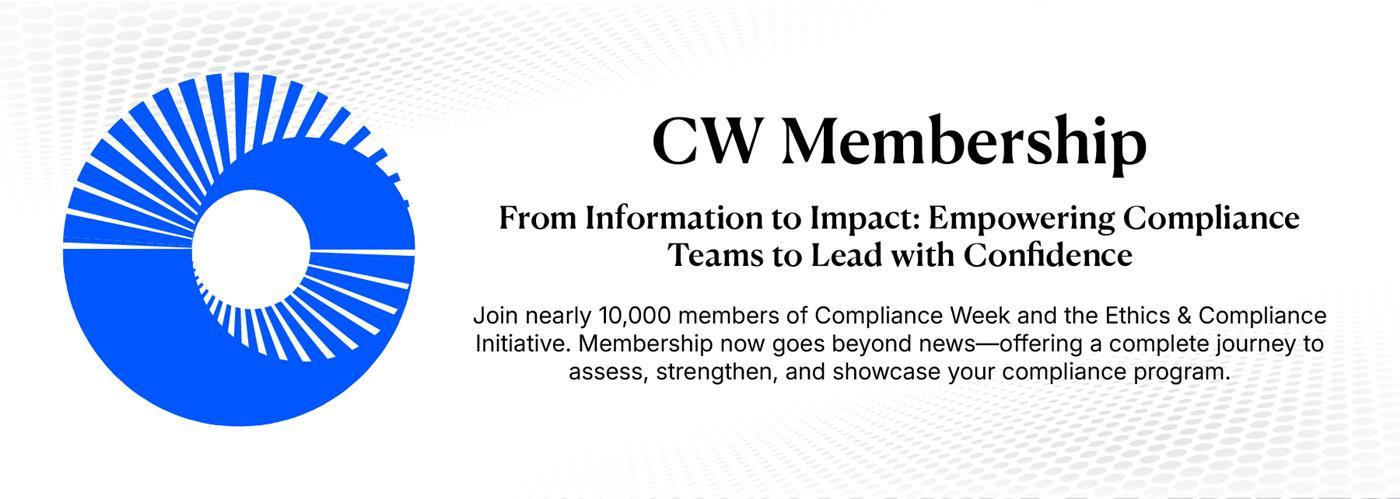- Home
-
News
- Back to parent navigation item
- News
- National Compliance Officer Day 2025
- Accounting & Auditing
- AI
- AML
- Anti-Bribery
- Best Practices
- Boards & Shareholders
- Cryptocurrency and Digital Assets
- Culture
- ESG/Social Responsibility
- Ethics & Culture
- Europe
- Financial Services
- Internal Controls
- Regulatory Enforcement
- Regulatory Policy
- Risk Management
- Sanctions
- Surveys & Benchmarking
- Supply Chain
- Third Party Risk
- Whistleblowers
- Opinion
- Benchmarking
- Certification
- Events
- Research
- Awards
-
CW Connect
- Back to parent navigation item
- CW Connect
- Sign In
- Apply
- Membership
The year of ransomware: How companies are boosting cybersecurity controls
By  Jaclyn Jaeger2021-11-18T13:00:00
Jaclyn Jaeger2021-11-18T13:00:00

High-profile ransomware events over the last year have prompted businesses to beef up cyber defenses through new investments, increased training, and more, according to our “Inside the Mind of the CCO” survey.
THIS IS MEMBERS-ONLY CONTENT
You are not logged in and do not have access to members-only content.
If you are already a registered user or a member, SIGN IN now.
Related articles
-
 Article
ArticleTreasury ransomware response: More sanctions, updated FinCEN guidance
2021-11-09T20:38:00Z By Aaron Nicodemus
The U.S. Treasury continued its crackdown on facilitators of ransomware payments, sanctioning a second virtual currency exchange and its affiliates and updating FinCEN guidance to help make financial institutions more aware of related red flags.
-
 Article
ArticleFinCEN report: Ransomware SARs surge past 2020 totals
2021-10-18T20:45:00Z By Aaron Nicodemus
A Financial Crimes Enforcement Network report on financial trends in Bank Secrecy Act data found a greater number of SARs related to ransomware filed between January and June 2021 than during all of 2020.
-
 Article
ArticleTPRM 2021: What to do before, during, and after a ransomware attack
2021-07-07T14:21:00Z By Aly McDevitt
Two risk and compliance practitioners opened their cyber-playbooks at CW’s TPRM virtual event, explaining how to identify and address vulnerabilities, establish transparency with vendors, and strengthen an organization’s incident management program.
More from Cybersecurity
-
 Article
ArticleRetail energy compliance must focus on resilience and reporting
2025-12-26T12:00:00Z By Ruth Prickett
Cybercrime and national critical infrastructure responsibilities are key concerns for retail energy sector compliance. Resilience is vital for companies that keep the lights on and power financial institutions and hospitals.
-
 News Brief
News BriefU.K. says company boards need to worry more about cybersecurity risks
2025-04-08T16:47:00Z By Aaron Nicodemus
The U.K. government wants directors and boards of directors to become more actively involved in cybersecurity risks facing public and private companies, as the world faces “alarming” threats from criminal gangs and malicious nation-states. Though many organizations take cybersecurity seriously, the U.K. government says they do not place management of ...
-
 Premium
PremiumNavigating compliance: A guide for small teams to tackle CMMC
2025-03-28T14:22:00Z By Thomas Graham, CW guest columnist
Many small organizations within the Defense Industrial Base are struggling to meet the rigorous requirements validated through the Cybersecurity Maturity Model Certification, writes Thomas Graham, CISO at Redspin. If you haven’t been tracking it closely, CMMC was finalized in October, with an effective date of December 16, 2024.
- Terms and Conditions
- Privacy Policy
- Do Not Sell My Info
- © 2025 Compliance Week
Site powered by Webvision Cloud






